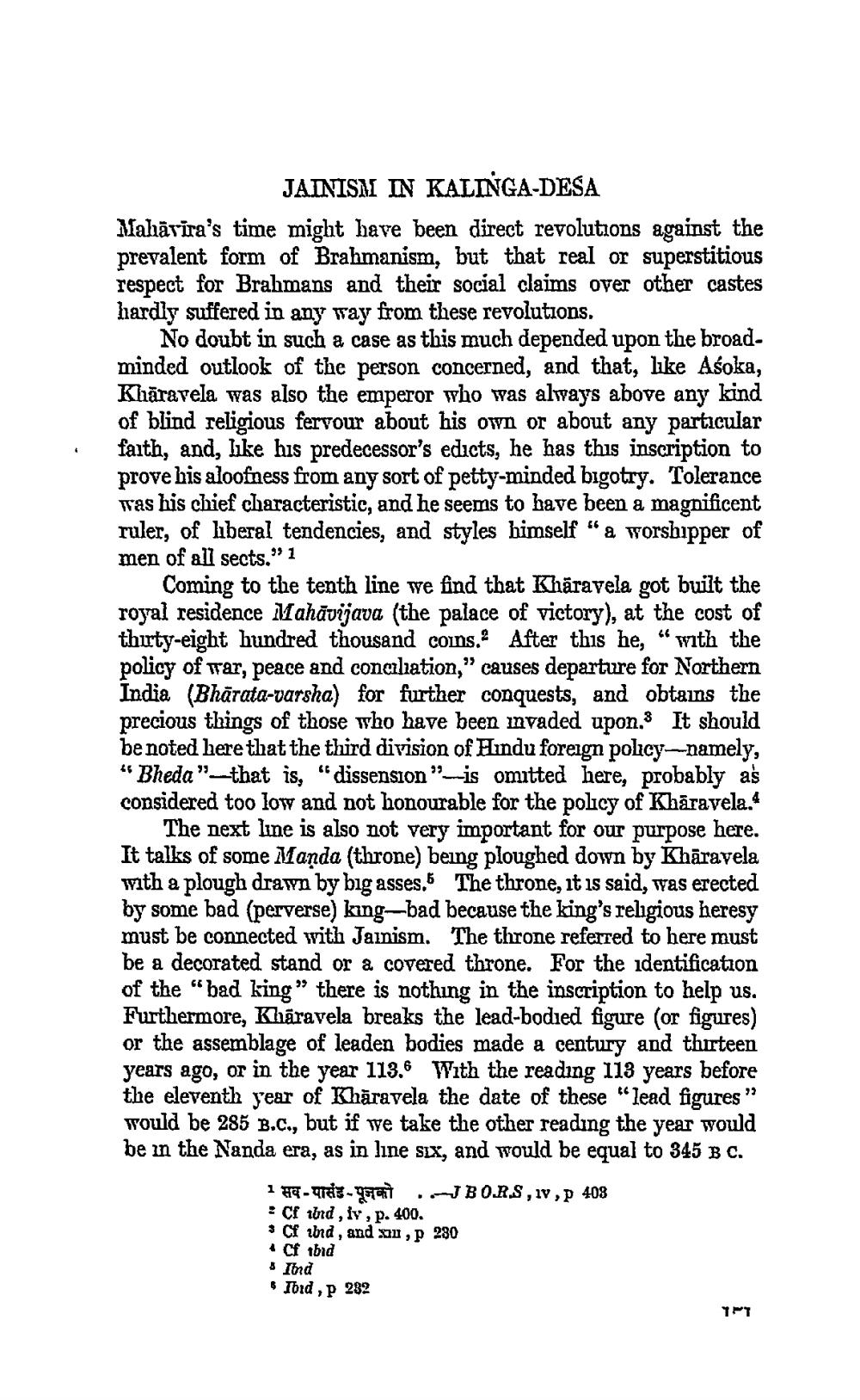________________ JAINISM IN KALINGA-DESA Maharira's time might have been direct revolutions against the prevalent form of Brahmanism, but that real or superstitious respect for Brahmans and their social claims over other castes hardly suffered in any way from these revolutions. No doubt in such a case as this much depended upon the broadminded outlook of the person concerned, and that, like Asoka, Kharavela was also the emperor who was always above any kind of blind religious fervour about his own or about any particular faith, and, like his predecessor's edicts, he has this inscription to prove his aloofness from any sort of petty-minded bigotry. Tolerance was his chief characteristic, and he seems to have been a magnificent ruler, of liberal tendencies, and styles himself " a worshipper of men of all sects." 1 Coming to the tenth line we find that Kharavela got built the royal residence Mahavijava (the palace of victory), at the cost of thirty-eight hundred thousand coins. After this he, "with the policy of war, peace and conciliation," causes departure for Northern India (Bharata-varsha) for further conquests, and obtains the precious things of those who have been invaded upon. It should be noted here that the third division of Hindu foreign policy-namely, "Bheda"-that is, "dissension"-is omitted here, probably as considered too low and not honourable for the policy of Kharavela. The next Ime is also not very important for our purpose here. It talks of some Manda (throne) being ploughed down by Kharavela with a plough drawn by big asses. The throne, it is said, was erected by some bad (perverse) king-bad because the king's religious heresy must be connected with Jainism. The throne referred to here must be a decorated stand or a covered throne. For the identification of the "bad king" there is nothing in the inscription to help us. Furthermore, Klaravela breaks the lead-bodied figure (or figures) or the assemblage of leaden bodies made a century and thirteen years ago, or in the year 113,6 With the reading 113 years before the eleventh year of Klaravela the date of these "lead figures" would be 285 B.C., but if we take the other reading the year would be in the Nanda era, as in line six, and would be equal to 345 BC. 408 1 - - BOR.S, 1v, : Cf tond, ty, p.400. * Cf ind, and in , p 280 Cf thid Inid Tord , 282 11




